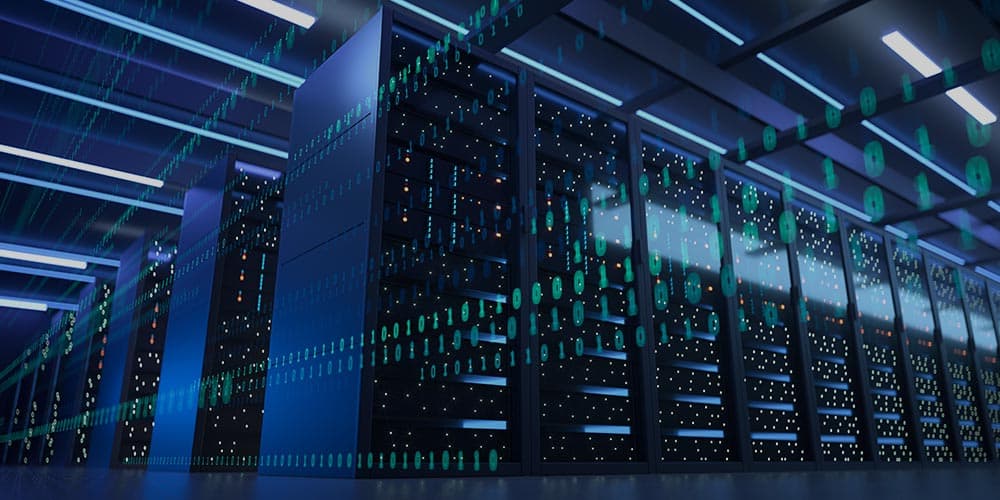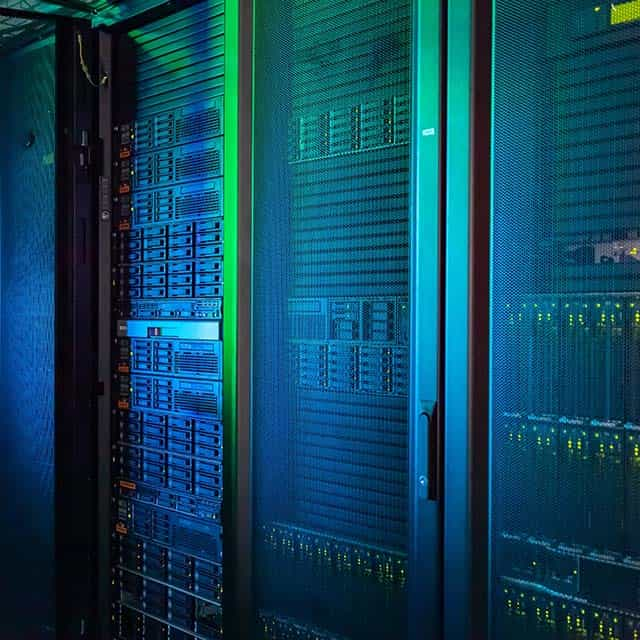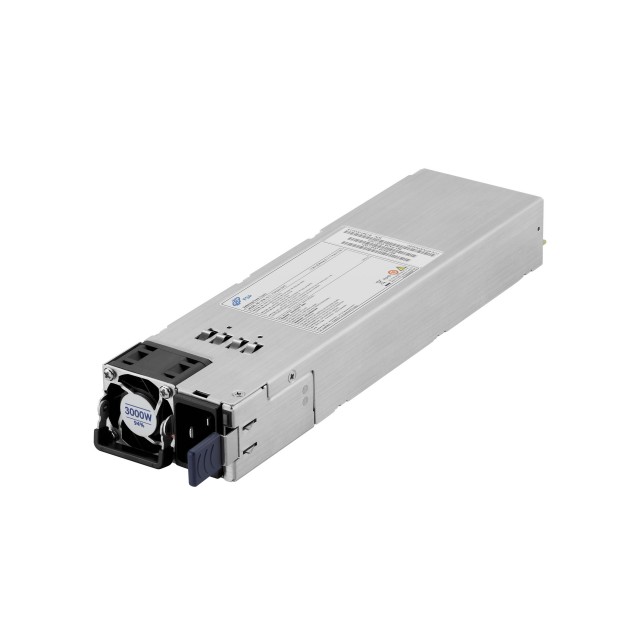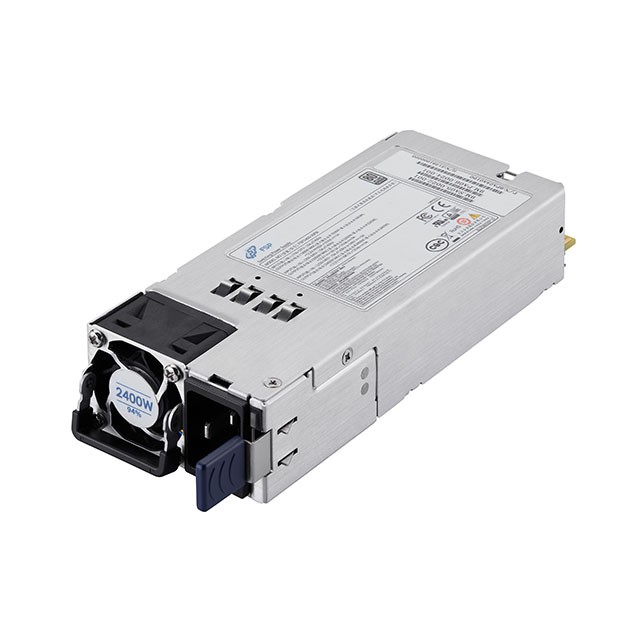What Is Supercomputing? A Guide for Beginners

Author: FSP Group
As the world undergoes unprecedented changes, such as climate change, natural disasters, and emerging diseases, the scale and complexity of these problems are increasing. Traditional problem-solving methods are no longer sufficient, leading to a reliance on Supercomputing technology. Currently, Supercomputing is applied in scientific research, engineering design, big data analysis, and other fields. Let's delve deeper into Supercomputing to understand what it is and how it works.
What is Supercomputing and How Does It Work?
Supercomputing, also known as a Supercomputer, is a data processing procedure that utilizes a large number of central processing units (CPUs) and high-speed networks to achieve the capability of processing large-scale data and high-performance computing. Supercomputing can be a single server or a data center-level computing platform composed of several servers. It leverages the characteristics of CPUs to create hundreds or thousands of parallel working nodes to collectively process complex problems. It may also be combined with graphics processing units (GPUs), which excel at parallel computing, to achieve computing speeds and data integration capabilities that ordinary computers cannot achieve.
What Equipment is Required for Supercomputing?
Supercomputing requires several key components, which can be broadly categorized into software and hardware. The software components include core elements such as network interfaces, remote display communication protocols, unified interfaces, cooling, and power management. The hardware components consist of CPUs, GPUs, cooling fans or heatsinks, memory, power supplies, and other elements. Below is a brief introduction to the hardware equipment that makes up Supercomputing:
CPU (Central Processing Unit)
The CPU is the brain of the computing device and is responsible for processing instructions and programs in a computer or operating system. It uses processing cores to handle individual tasks and is suitable for a wide range of tasks, including general computation and database operations. Supercomputing achieves faster computation speeds by using a large number of CPUs.
GPU (Graphics Processing Unit)
The GPU is a microprocessor used for graphic computations in a computer. It features a simple parallel computing architecture with a high number of cores, making it suitable for specialized tasks. In Supercomputing, GPUs are used to offload more complex tasks from the CPU, thereby increasing computational speeds.
Cooling Fans or Heatsinks
The high-speed computations in Supercomputing generate a significant amount of heat. Cooling systems help dissipate this heat to maintain the efficiency and lifespan of the CPU.
Memory
Memory is essential for storing database information. High Bandwidth Memory (HBM) is created by stacking Dynamic Random Access Memory (DRAM) and using advanced 3D packaging to increase bandwidth and storage capacity. HBM is extensively used in high-speed computations.
Power Supply
The primary function of a power supply is to convert standard alternating current (AC) into low-voltage stable direct current (DC) for use by devices or equipment. Supercomputing requires higher voltage and wattage, so there are higher standards for power supplies. For example, two industrial computer power supplies provided by FSP, the FSP3000-20FE and FSP2400-20FM, are CRPS standard redundant power modules that provide up to 3,000 watts and 2,400 watts of total power capacity, along with PMbus functionality for communication with the motherboard. These are suitable for data centers, workstations, communications, AI, industrial automation, and more.
- Low iTHD
- Working temperature: 0 to 55°C
- Design for 5,000 meters above sea level
- Support OCP, OTP and OVP circuit protection
- Short circuit protection on all outputs
- Resettable power shut down
- MTBF: 250K hours of continuous operation at 40°C, 75% output load
- Low iTHD
- Working temperature: 0 to 55°C
- Design for 5,000 meters above sea level
- Support OCP, OTP and OVP circuit protection
- Short circuit protection on all outputs
- Resettable power shut down
- MMTBF: 500K hours of continuous operation at 50°C, 100% output load
What Are the Advantages of Supercomputing?
Supercomputing offers several advantages, including high-speed computing, the ability to perform big data analysis, and improved precision.
High-Speed Computing
Supercomputing utilizes a large number of CPUs, enabling it to process a large number of computing tasks in a short amount of time. Computing speed is measured in floating-point operations per second (FLOPS), and Supercomputing can achieve speeds of Petaflops, equivalent to one quadrillion floating-point operations per second (1015). This speed is millions of times faster than a personal computer, offering advantages such as time and cost savings and accelerated innovation.
Big Data Analysis
Big data analysis relies on enormous data processing capabilities. Enterprises may have data volumes ranging from terabytes (TB) to petabytes (PB) to exabytes (EB). Supercomputing can process thousands of gigabytes of data points in a short time and perform precise analysis, helping users make better decisions, including time and cost savings, accelerating product development, and formulating more precise business strategies.
Improved Precision
High-performance computing resources are more reliable and provide higher precision in data analysis or troubleshooting. High-speed computing can also provide more accurate results through multiple analyses, including weather forecasting and space exploration.
What are the Applications of Supercomputing?
Supercomputing is widely used across various fields, with main applications including scientific research, climate simulation, biomedical research, engineering, and manufacturing.
Scientific Research
Supercomputing is used in physics, chemistry, astronomy, and other scientific fields to process complex mathematical models and large amounts of experimental data. For example, in quantum science, the European Organization for Nuclear Research (CERN) uses Supercomputing to process the massive data generated by the Large Hadron Collider (LHC). The LHC produces data at a rate of up to 40TB per second, and Supercomputing helps accelerate the data analysis process, advancing human scientific development.
Climate Simulation
Supercomputing is used to predict changes in Earth's climate, including global warming, extreme weather events, sea-level rise, natural disasters, etc. This helps researchers better understand the direction of global climate change and take proactive protective measures. For example, the Central Weather Bureau of Taiwan uses Supercomputing for weather forecasting, typhoon prediction, and sea-level monitoring.
Biomedical Research
Supercomputing can analyze large amounts of genetic data, helping scientists conduct genetic research to understand the genetic roots of diseases, accelerate drug development, and predict the effects and side effects of drugs, improving the efficiency of the healthcare system. For example, the National University Health System in Singapore uses Supercomputing to enhance the efficiency of physicians' work, including processing case data, analyzing medical histories, and predicting the development of common diseases.
Engineering and Manufacturing
In the engineering field, Supercomputing is used for designing simulations, structural analysis, computational fluid dynamics, etc., to improve design efficiency. For example, Formula One (F1) racing uses computational fluid dynamics to test car characteristics. By incorporating more detailed simulation details into vehicle design, F1 has not only reduced costs by 30% but also enhanced the excitement of the race.
The Relationship Between Supercomputing and AI
Is Supercomputing the Same as AI?
IBM points out that Supercomputing and AI are two different fields. In the past, supercomputers were not designed for AI. Simply put, AI is more like one of the terminal applications that relies on Supercomputing.
|
Differences Between Supercomputing and AI |
||
|---|---|---|
|
|
Supercomputing |
AI |
|
Introduction |
A data processing procedure for high-speed computing |
Using code to demonstrate technologies of human intelligence |
|
Functionality |
Tasks include data processing, model building, and simulation |
Simulating human thought patterns, executing advanced functions |
|
Applications |
Applied in scientific research, climate simulation, biomedical research, engineering, and manufacturing |
In industries such as healthcare, business, education, finance, engineering, manufacturing, and transportation |
|
Source: IBM, compiled by the author |
||
What Benefits can Supercomputing Bring to AI?
Supercomputing can bring several benefits to AI. With the global rise of generative AI, AI models are now capable of generating text, images, videos, and other powerful features. Supercomputing has greatly contributed to the field of AI, accelerating AI model training, handling large amounts of database data, and implementing AI in real-life applications. The amount of data used by AI, particularly in large language models (LLMs), is rapidly increasing, with parameter counts even exceeding trillions. With the assistance of Supercomputing, the time required to train AI has been significantly shortened, enabling AI to be truly implemented in fields such as healthcare, finance, and education.
The Development of Supercomputing and AI:
In 2023, AI-related applications surged influenced by ChatGPT, with emerging application topics providing strong growth momentum. Areas such as 5G, Internet of Things (IoT), AIoT, autonomous driving, and edge computing have injected new energy into the AI industry. Supercomputing is an indispensable driving force behind generative AI. It not only optimizes AI's computing technology and significantly shortens the time required to train AI but also enables AI to be practically applied in our daily lives. In the wave of the big AI era, governments and major corporations worldwide are actively deploying Supercomputing and AI. For example, the European Union announced in 2023 that it would invest 150 million euros to create MareNostrum5, which will be used in pharmaceutical research and development, vaccine development, virus spread simulation, and AI and big data processing.
Conclusion
Supercomputing has become the hope for solving many significant problems, enabling precise big data analysis through high-speed computing. It has been implemented in fields such as scientific research, climate simulation, biomedical research, and engineering manufacturing. With the rise of 5G, Internet of Things (IoT), AIoT, autonomous driving, and edge computing, Supercomputing has become a crucial player and its future growth potential is considerable.
Related article on edge computing: An Important Key to Supporting Digital Transformation
About FSP
FSP Group is one of the global leading power supply manufacturer. Since 1993, FSP Group has followed the management conception “service, profession, and innovation” to fulfill its responsibilities as a green energy resolution supplier.





